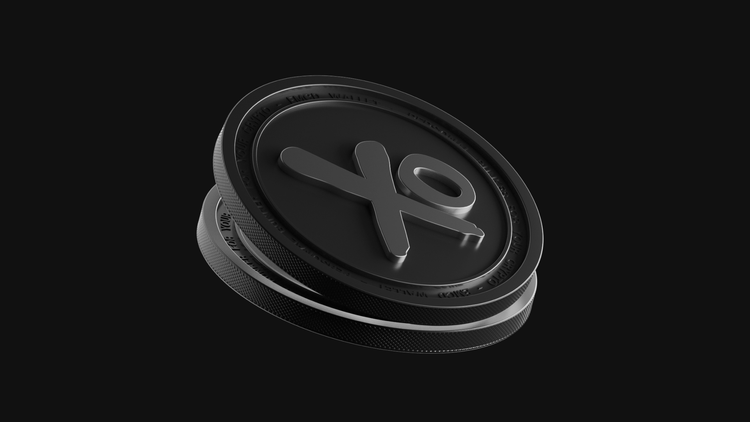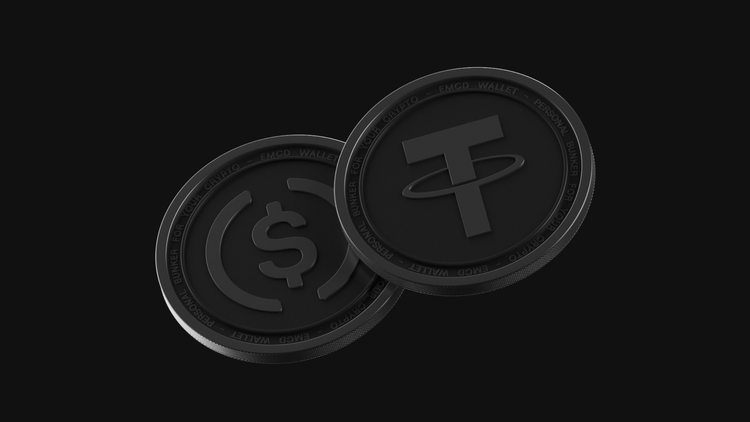Crypto Funding Explained: Strategies for Profit

Imagine earning money just by holding a position in the volatile crypto market — without even worrying about price swings! Sounds too good to be true? It’s not. Welcome to the crypto funding world, where traders profit from the very mechanism that keeps the market in balance. In this article, we’ll dive into how crypto funding works, why it’s a game-changer for traders, and how you can use it to your advantage, no matter which direction the market is heading. Ready to unlock the potential of funding rates? Let’s go!
What’s Crypto Funding in Simple Terms?
Crypto funding isn’t just a fancy term — it’s the secret sauce that keeps the crypto market in check. Ever wonder how prices on perpetual futures (like BTC/USDT) don’t go off the rails? That’s funding in action, keeping contract prices locked in sync with the real-time market value of Bitcoin. Think of it as the invisible hand that prevents chaos.
Here’s the kicker: traders can actually make money from funding itself. Whether the market is climbing or diving, the funding rate gets transferred between traders — sometimes long holders pay shorts, sometimes the other way around. It’s a whole new way to profit beyond just buying or selling crypto.

But let’s break it down even more. To understand the funding meaning, we need to distinguish between fixed-term and perpetual contracts. In traditional fixed-term contracts, the price aligns with the market when the contract expires. Funding doesn’t apply here, but price fluctuations can still mess with your profits. In contrast, perpetual contracts have no expiration, which means they need the funding rate to avoid wild price swings and keep things balanced. Without it, you’d have chaos on your hands, and trading would be a nightmare.
To sum it up, the funding definition is the mechanism that keeps perpetual futures in line with the spot market. Without it, prices could go haywire. Ready to learn how to use this tool to make money? Keep reading!
Positive and Negative Funding: How They Impact Your Crypto Trades
Positive funding indicates that the futures price is higher than the spot price. In this case, the exchange charges a fee to long position holders and pays it to those holding short positions. This means that long traders pay more, while short traders receive the fee as a bonus for trading in that direction.
If the price continues to diverge, the funding rate increases, making long trades less profitable. The exchange uses this mechanism to encourage traders to close their long positions and switch to shorts. In this case, closing long positions puts downward pressure on the price, causing the futures price to realign with the spot price.
Let’s consider the opposite situation. Negative funding means the futures price has dropped below the spot price. To correct this imbalance, the exchange charges fees to short position holders and pays them to long position holders. This motivates traders to avoid short positions and shift to longs.
As the price continues to fall, the funding rate increases, making shorting less profitable. The exchange encourages traders to close their short positions and enter long positions. In this case, closing short positions creates upward pressure, bringing the futures price back in line with the spot price.
The closer the futures contract price is to the spot price, the lower the funding rate. Therefore, it isn’t in traders' best interest to let the contract price deviate significantly from the spot price. The exchange continuously encourages traders to maintain this balance, ensuring market stability.

The funding rate is applied throughout the time a position is open. It depends on market conditions, which can either rise or fall. This means that if you hold a position on the exchange for an extended period, you may alternate between paying and receiving funding payments.
The formulas for calculating funding rates may vary across different exchanges. However, the core principle behind this mechanism is to maintain a balance between futures prices and spot prices. This technology helps control the trading market and prevent unjustified price fluctuations in contracts, ensuring that spot market trading remains profitable and stable for participants.
How Funding Rates Are Calculated
Only traders with open positions have the right to receive funding. If a position is closed before the funding calculation time, no payments are made.
Funding is paid out three times a day: at 04:00, 12:00, and 20:00 UTC.
Formula: Funding = Position Value x Funding Rate.
The position value doesn’t include leverage; only trade nominal value matters.
The funding rate can be either positive or negative.
When the funding rate is positive on the exchange, long position holders who have bought XBT in anticipation of Bitcoin's price increase must pay short position holders. Short sellers, on the other hand, have sold BTC expecting its price to drop.
This passive income strategy relies on the overinflated expectations of participants who believe in the future rise of the cryptocurrency market. However, they must pay for this optimism.
The funding rate consists of two components: the interest rate and the premium. This mechanism's main goal for trading transactions is to align the interests of buyers and sellers, ensuring maximum liquidity on the exchange.
Unlike casinos or Forex brokers, this market doesn’t bet on Bitcoin's rise or fall. Its purpose is to connect trades efficiently without posing any risk to the exchange itself.
If all participants suddenly start buying XBT, driven by hype, FOMO, or greed, there will be a lack of sellers. In this case, the funding rate typically incentivizes sellers to enter the market, reducing Bitcoin demand and balancing the situation. The fewer the sellers, the higher the funding rate becomes. The same mechanism works in reverse. During moments of panic, when many traders want to take short positions, each buyer receives generous rewards. These market fluctuations occur quite frequently, even within a single day.
The funding rate mechanism is transparent, as information about the current rate is available directly on the exchange’s site. It dynamically changes until it is fixed within an hourly interval.
Top Strategies to Profit from Crypto Funding Rates
You can earn money from funding rates using a so-called delta-neutral strategy. This approach aims at neutralizing the risk associated with changes in the price of an asset. It's achieved by combining long and short positions in such a way that the overall exposure to market fluctuations is minimized. In other words, the total delta of the portfolio is equal to zero. This means that small price movements in the underlying asset have little to no effect on the value of the portfolio.
Using Funding Rates to Gauge Market Sentiment
Funding rates show market sentiment. High positive rates usually indicate a bullish trend, while significantly negative rates suggest a bearish outlook. By analyzing funding rates alongside the overall trend, you can get valuable trading signals.

Here’s what to consider:
- Positive funding rate. When the contract price is higher than the spot price, opening a short position may make sense, as the market could be overbought
- Negative funding rate. When the contract price is lower than the spot price, going long could be profitable, as the market may be oversold
If the funding rate and trend diverge, it could signal opportunities:
- For example, a positive funding rate while the price is falling might mean long position holders are overestimating the market strength. In this case, opening a short position could be profitable
- If the funding rate is negative and the price is rising, there might be too many short positions, and going long could allow you to profit from receiving payments from those short traders
Tracking funding rates is key to avoiding negative outcomes and making informed decisions. Some platforms even offer bots to help manage these strategies.
Arbitrage: Profiting from Funding Rate Differences
This trading strategy involves capitalizing on differences in funding rates across multiple platforms. For example, if the financing rate for the same coin is 0.06% on exchange A and 0.03% on exchange B, you can take advantage of this discrepancy. Since each rate is paid out consistently every 8 hours, long positions on exchange A will pay funding fees to short positions, while the opposite will happen on Exchange B. This creates an opportunity to earn by strategically positioning funds across different exchanges.
Let's say you have $20 000 available for trading, and the funding rate remains unchanged for 24 hours.
On exchange A:
- The funding rate is positive, so you open a short position worth $10 000
- Daily profits without leverage: ($10 000 × 0.06%) × 3 = $18
- With leverage, this return increases
On exchange B:
- The funding rate is negative, so you open a long position worth $10 000
- Daily profits without leverage: ($10 000 × 0.03%) × 3 = $9
Beyond funding gains, you must also account for trading fees and fund transfers between exchanges.
Spot and Futures Hedging: Risk Management Strategy
Futures positions can be secured using spot assets. The key principle is simple: traders buy cryptocurrency on the spot market while simultaneously opening a long or short position for the same asset in the perpetual futures market. This strategy helps manage risk and maintain financial stability in volatile conditions.
Let’s assume you have $22 200, and BTC is trading at $20 000 on the spot market and $22 000 on the perpetual futures market. You buy 1 BTC on the spot market for $20 000. Simultaneously, they open a short position on BTC worth $2 200 with 10x leverage. Since both positions offset each other, volatility has minimal impact. If the funding rate remains at 0.06% every 8 hours for 24 hours, the theoretical profit, excluding fees, would be:
- Without leverage: ($2 200 × 0.06%) × 3 = $3.96
- With 10x leverage: $39.60
It's essential to consider the liquidation risk when using leverage. To mitigate this, you can increase the margin or set a stop-loss for added security.
How to Profit from Funding Rates: A Hidden Strategy for Crypto Traders
By default, the initial funding rate commission is 0.01% of the open position size, favoring short positions, as long positions typically dominate. However, during a bull market, this commission rate can increase by 20–30 times, reaching 0.2–0.3%, as everyone rushes to open long positions. This creates an option to earn by strategically taking advantage of the funding rates, especially when the market sentiment shifts.
It’s straightforward to calculate the profitability of holding a short position of $100 000 for one month with a funding rate of 0.2%. The rate is applied 3 times a day every 8 hours.
Here’s the calculation:
- 0.2% × 3 = 0.6% per day
- 0.6% × 30 days = 18% per month
This means the month profit would be $18 000 on a $100 000 position.
This demonstrates the potential for earning significant returns purely from funding fees in a short position.
However, there are some nuances.
Firstly, these high funding rates aren’t always available, though at times the rate has reached 0.4% or even 40 times higher than the standard. Therefore, it’s more realistic to estimate monthly returns at around 8-15%, which translates to an annual return of 96-180%.
Secondly, you should consider the liquidation price and potential losses on a short position if the underlying asset BTC/ETH increases in value. This is where things get interesting. If you open a short position with isolated 1x leverage on an inverse BTC/USD contract, there is no liquidation risk, and the value of the open position in dollar terms remains constant. This eliminates liquidation risk and offers a more stable way to earn from funding rates without worrying about price movements.
So, it’s possible to earn from funding without worrying about price fluctuations. If you close the short position at any time, regardless of whether it’s in profit or loss, and immediately convert the BTC/ETH used as collateral back into USDT, the dollar amount will remain unchanged. This means that the dollar value will be the same as when the position was initially opened, providing a more predictable and safe way to profit from funding rates.
This concept might not be immediately clear, so let's consider an example:
Suppose you open a short position with 1x leverage worth $30 000, using 1 BTC on an inverse contract, with $30 000 in their account. Then, the Bitcoin price rises to $35 000. You incur a $5 000 loss on the short position, but the BTC price is now $35 000, and your account still has $30 000.
Throughout this process, the funding rate is still being regularly applied, meaning you continue to earn or pay based on the funding rate, regardless of the loss on the short position.
This approach allows you to profit from funding rates while minimizing the price liquidation risk. As a result, you can earn a steady income from the funding rate while also reducing potential losses due to market volatility.
Keep in mind that this method has its own nuances and risks. It should only be applied cautiously and only after thoroughly understanding the mechanics of inverse contracts and funding rates. Proper research and risk management are crucial for using this strategy effectively.
As a result of using this technology, at any point – regardless of whether the short position is in profit or loss – if it’s closed and the BTC or ETH is immediately converted back into USDT, the dollar amount remains unchanged. The increase in the value of the underlying asset ultimately compensates for the losses from the short position at a 1:1 ratio. This explains why the possibility of taking a short position on an inverse contract arises, as the strategy allows for minimizing risks and ensuring that the value in USD remains stable, regardless of price movements.
Now, let’s consider the steps you need to take:
- Deposit funds into your trading account using USDT
- Convert USDT to BTC or ETH
- Open a sell position with isolated 1x leverage on an inverse BTC/USD or ETH/USD contract for the desired amount to earn profit
- Earn funding every eight hours, generating income
By following these steps, you can earn a steady income from funding rates while minimizing the risks associated with market fluctuations.
You should open short positions on both BTC and ETH simultaneously since the funding rate may differ for each asset.
It’s crucial to monitor the funding rate, ensuring that it remains positive. You can track the rate using multiple platforms or directly on the exchange to optimize the strategy and maximize profit.
Funding consists of regular payments made to traders holding positions in the perpetual futures market. These payments are applied several times a day and help to reduce the gap in long-term prices between the underlying asset and the derivative contract. This mechanism helps maintain the price stability of perpetual contracts relative to the spot market, providing a potential income source for you.
F.A.Q.
How can I use funding in trading?
Funding is an excellent tool for generating returns during periods of high cryptocurrency price volatility. You can use it to earn a percentage from funding rates and to reduce price fluctuation risks.
What influences funding?
Funding is influenced by the following factors: the difference between the futures and spot prices, supply and demand balance in the market, and market sentiment.
Where to check cryptocurrency funding?
The latest cryptocurrency funding updates can be best tracked on major exchanges like Binance, Bybit, or FTX. These platforms provide real-time data on funding rates, allowing you to monitor and make informed decisions based on market conditions.
How does funding affect the price?
Funding represents payments made between traders holding long or short positions. This tool reflects market sentiment and influences price changes. For example, if there are a lot of long positions being opened, demand and price tend to rise. Conversely, the same principle applies to short positions. The funding rate acts as a mechanism to align the price of perpetual contracts with the spot market, reflecting the prevailing market mood.




